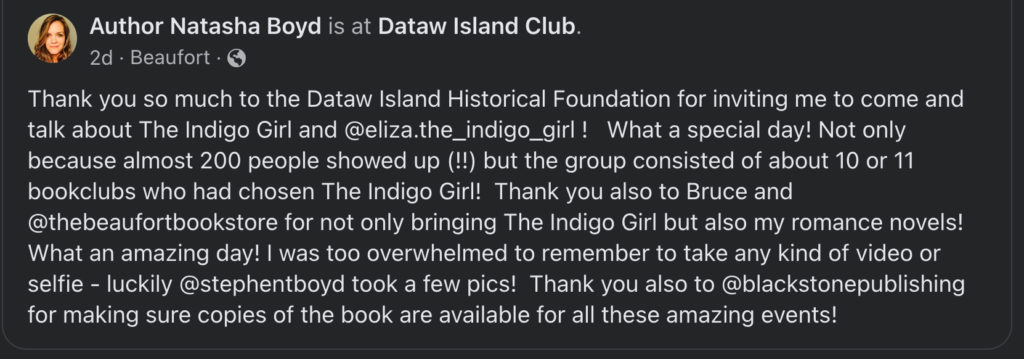The Event
Natasha Boyd, the author of Indigo Girl, was the guest speaker at the Dataw Historic Foundation Author’s Luncheon in early April organized by Rosemary Patterson, DHF Publicity Chair and powerhouse extraordinaire.
Natasha treated approximately 190 guests to an engaging presentation about her inspiration and writing process for Indigo Girl. Marilyn Peck, DHF President, welcomed us to the event and thanked Natasha and her husband, Stephen, for taking a break from visiting family in Charleston to come down to Dataw Island. Several Dataw residents, Carolynn Tedeschi, Lori Thompson, and Bill Riski, began the afternoon event by commenting on their passion for indigo and its connection to Datha Island. Rosemary Patterson then told the story of how she connected with Natasha to pull this off.
Mrs. Boyd and her family are currently living in Spain. However, they were planning a trip to the U.S. to visit other family and graciously accepted Rosemary’s request to come to Dataw Island for this event.
Natasha gave a personable and engaging talk about discovering, researching, and creating her story about Eliza Pinckney. As she says, it’s “An incredible story of dangerous and hidden friendships, ambition, betrayal, and sacrifice.” She explained how Eliza’s true story inspired her to write this historically accurate novel about such a strong young woman. Eliza’s indigo success was a key financial element that enabled our nation’s birth in the mid to late 1700s.
I discovered in preparing my short piece about the connection between Datha Island and indigo that not only was the plant grown here, but Eliza Pinckney gave indigo seeds to her neighbor over on Wadmalaw Island, Robert Sams, in 1744. Robert was ‘our’ William Sams father!
After the luncheon, several DHF board members welcomed Natasha and her husband, Stephen, to our History & Learning Center, followed by a tour of the Sams Plantation Complex Tabby Ruins and the Old Sams Family Cemetery. The photo above is of Natasha signing our HLC guest book.
After the event, Rosemary reflected on the experience. “It has been better than I dreamed in my head. I felt driven to do this, and every detail came together. Some people said it was the best event they’ve attended on Dataw. I couldn’t have done it without all the help from my friends, Amy, and the foundation’s members.”
To which I can only ask, who’s next?
To enlarge an image, click on it.
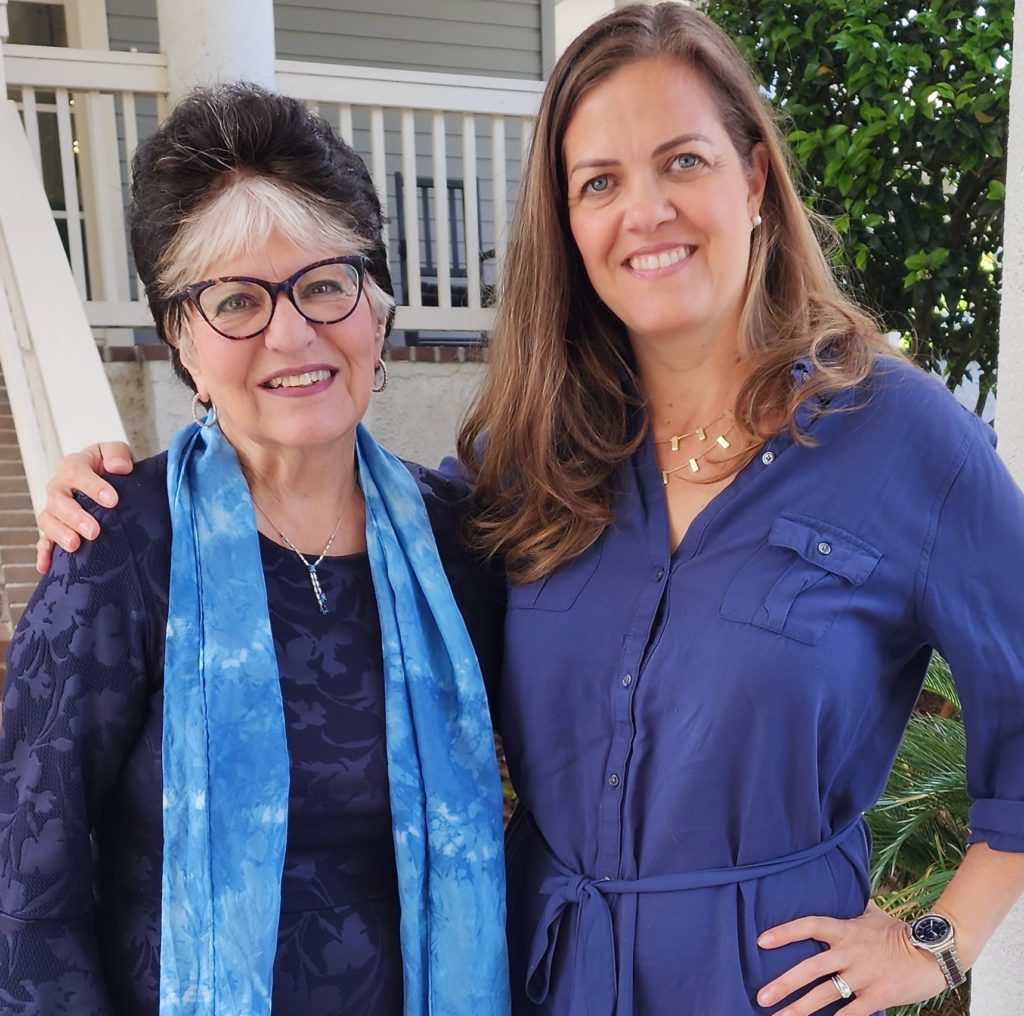
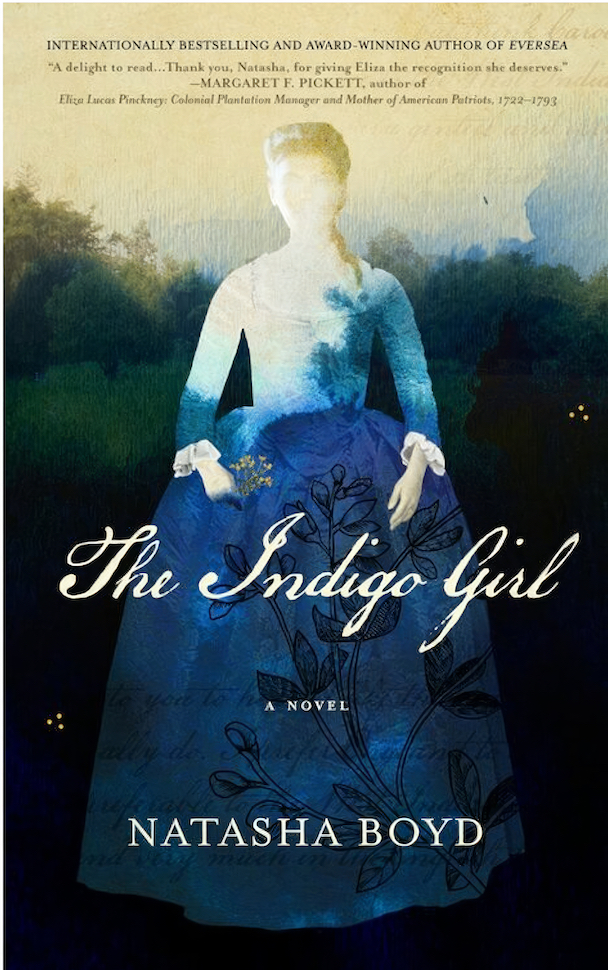
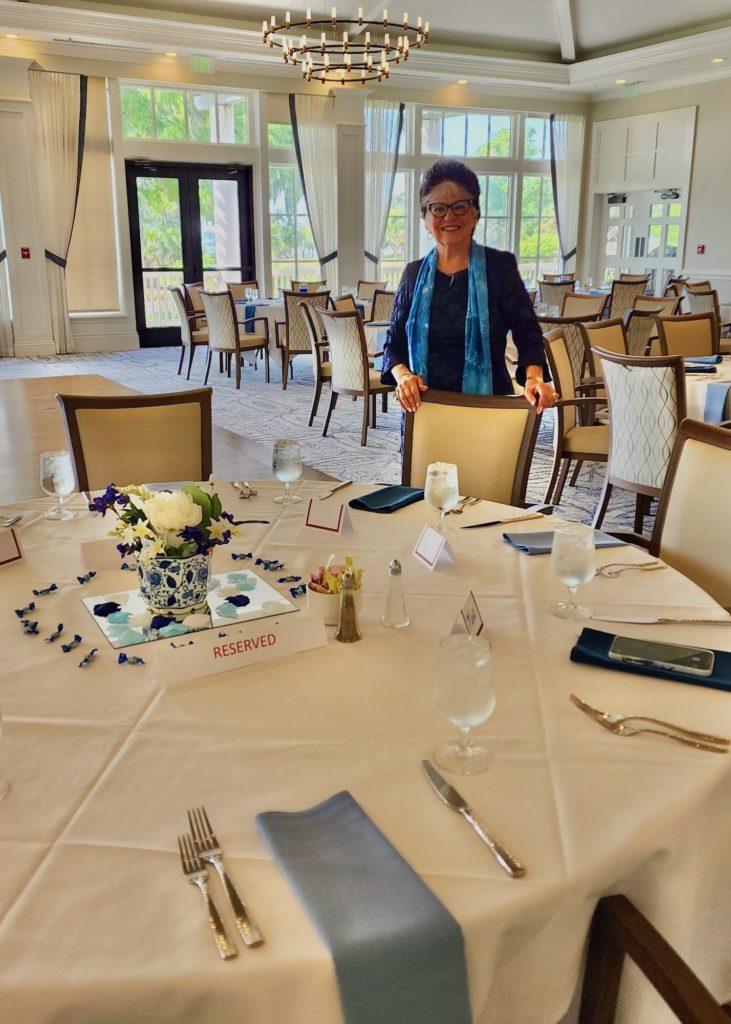
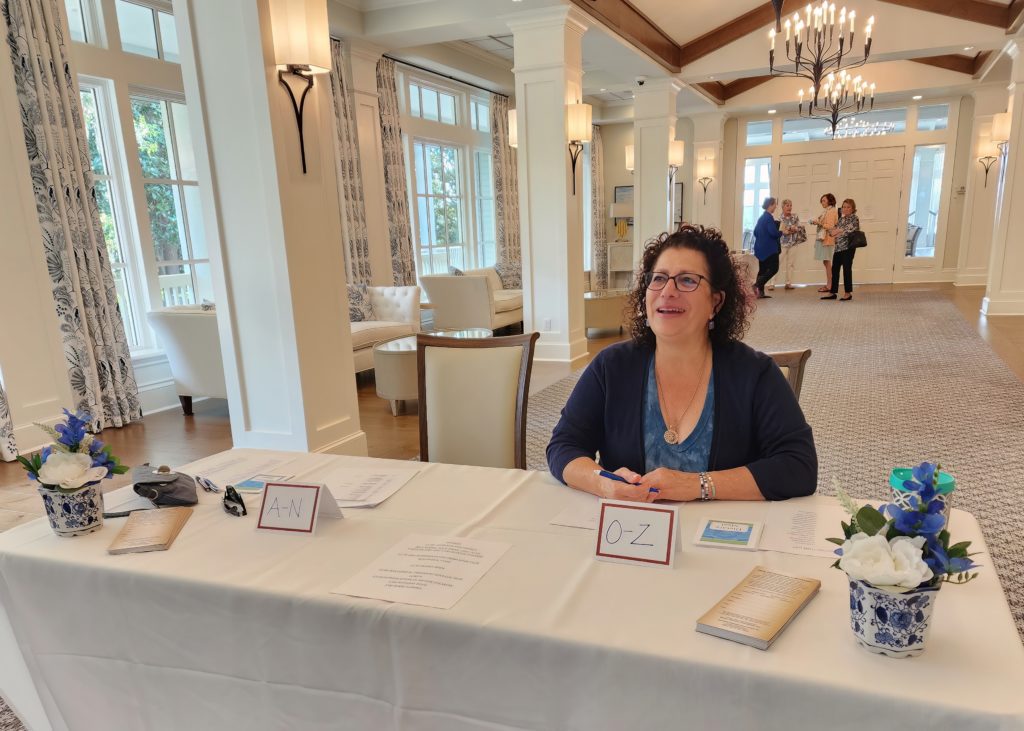
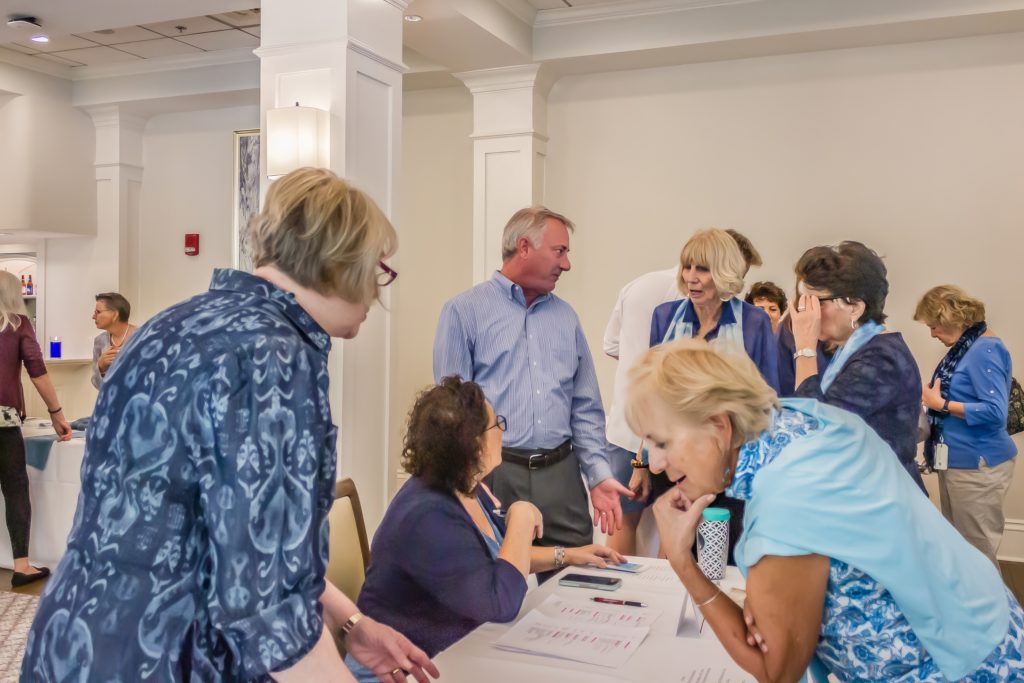
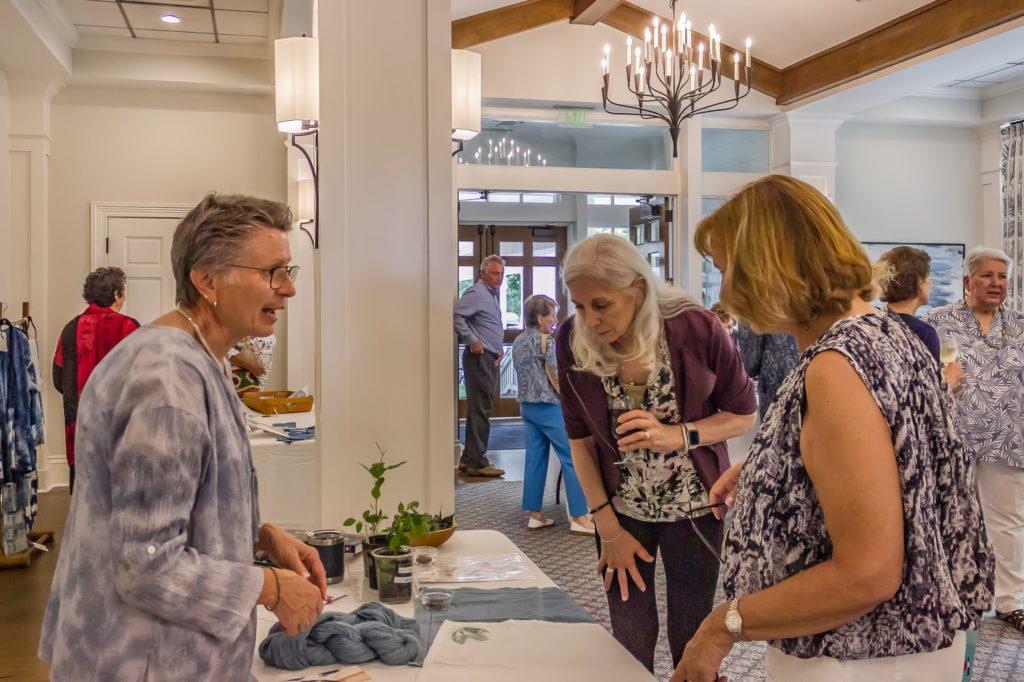
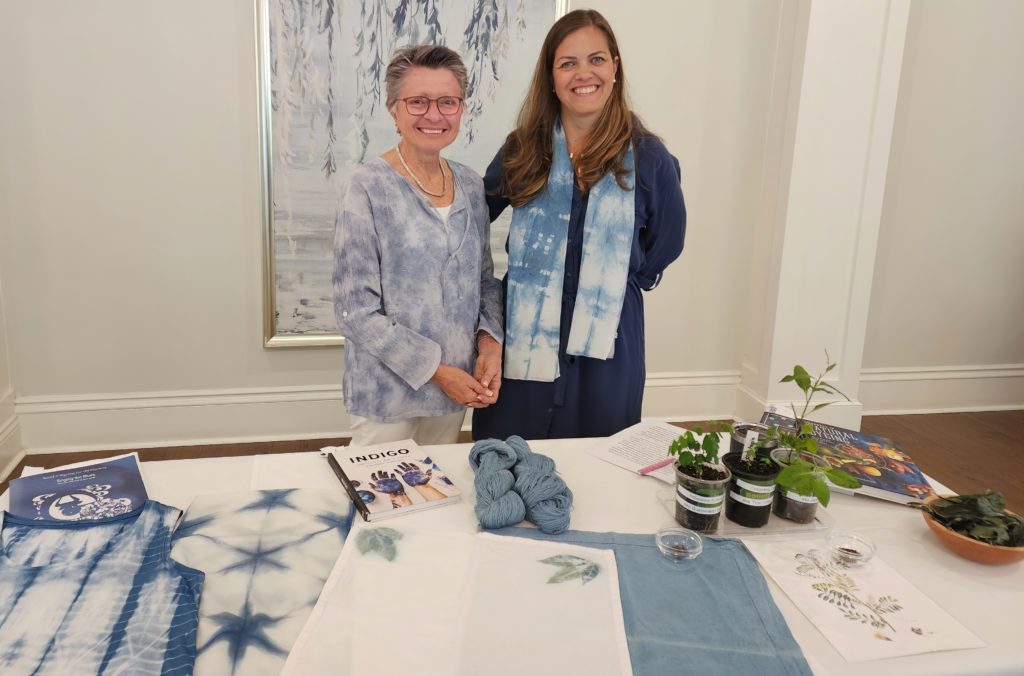
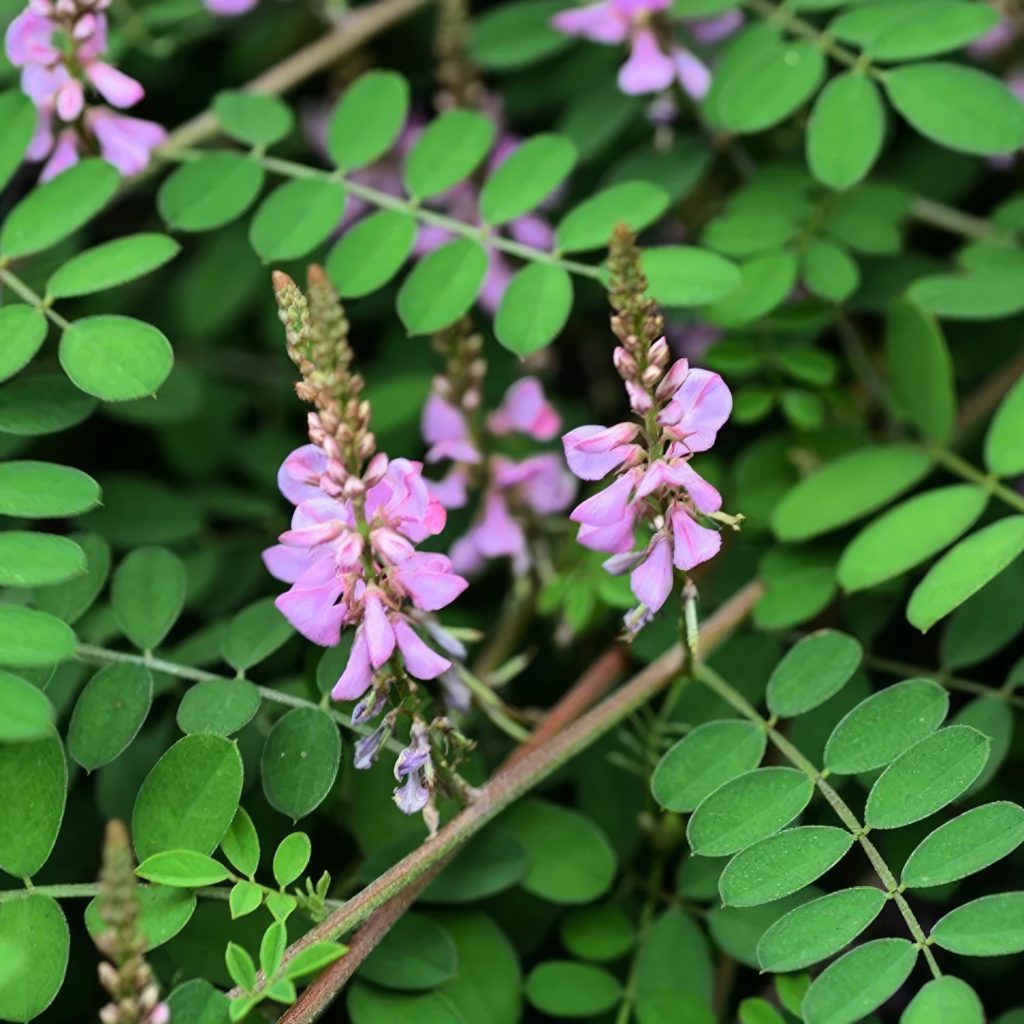
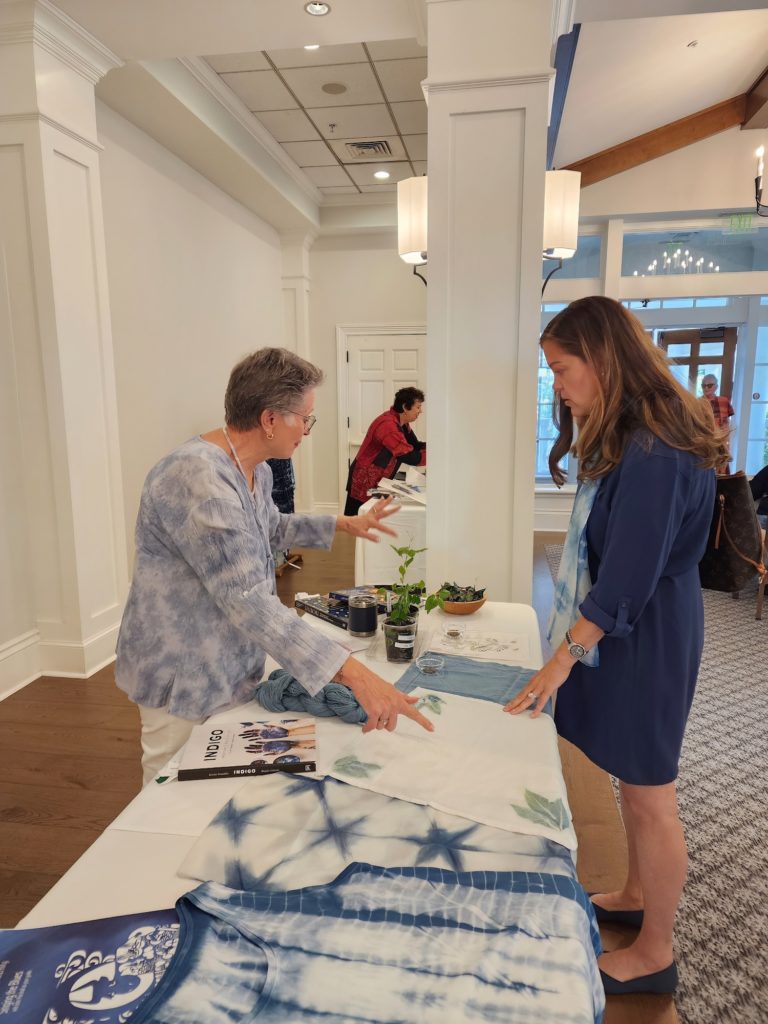
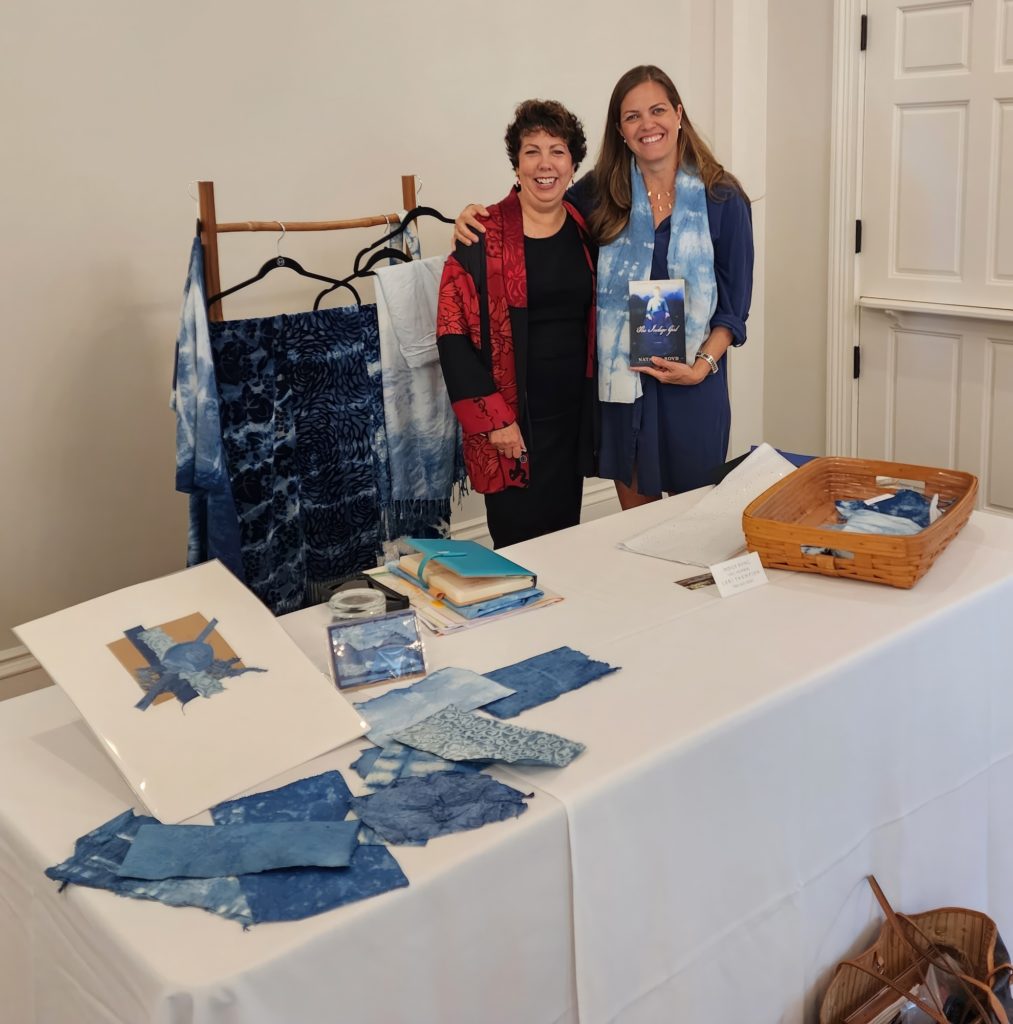
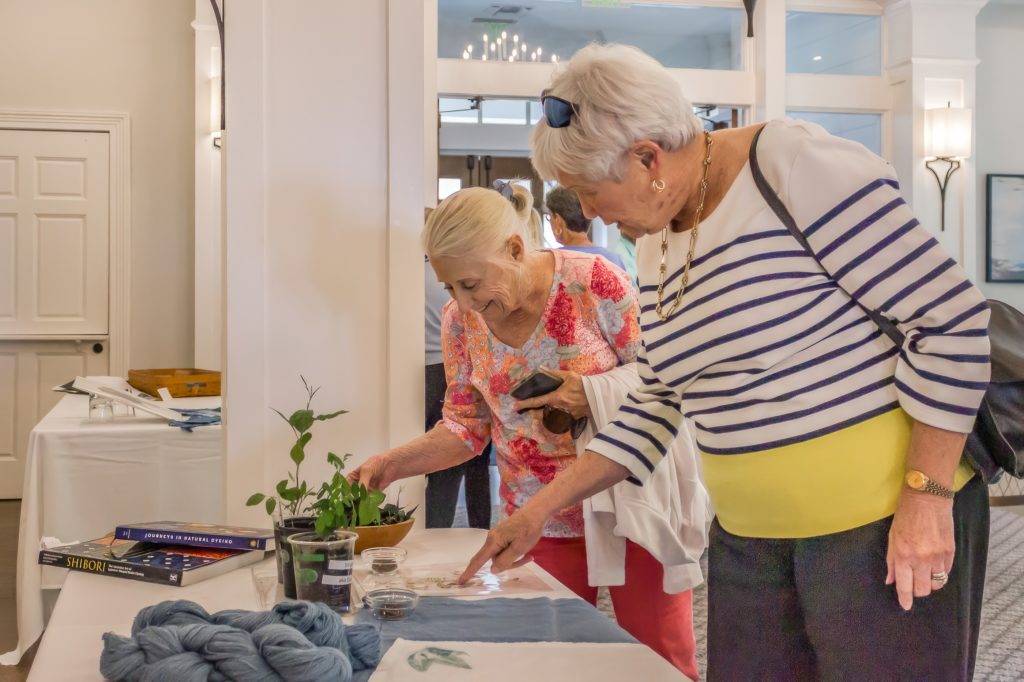
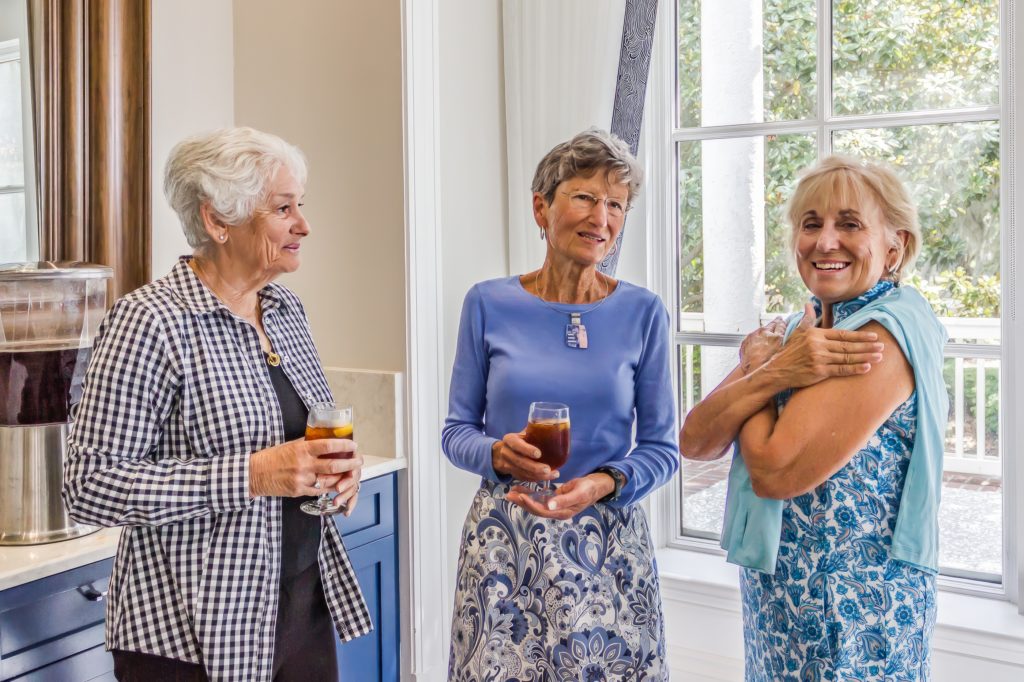
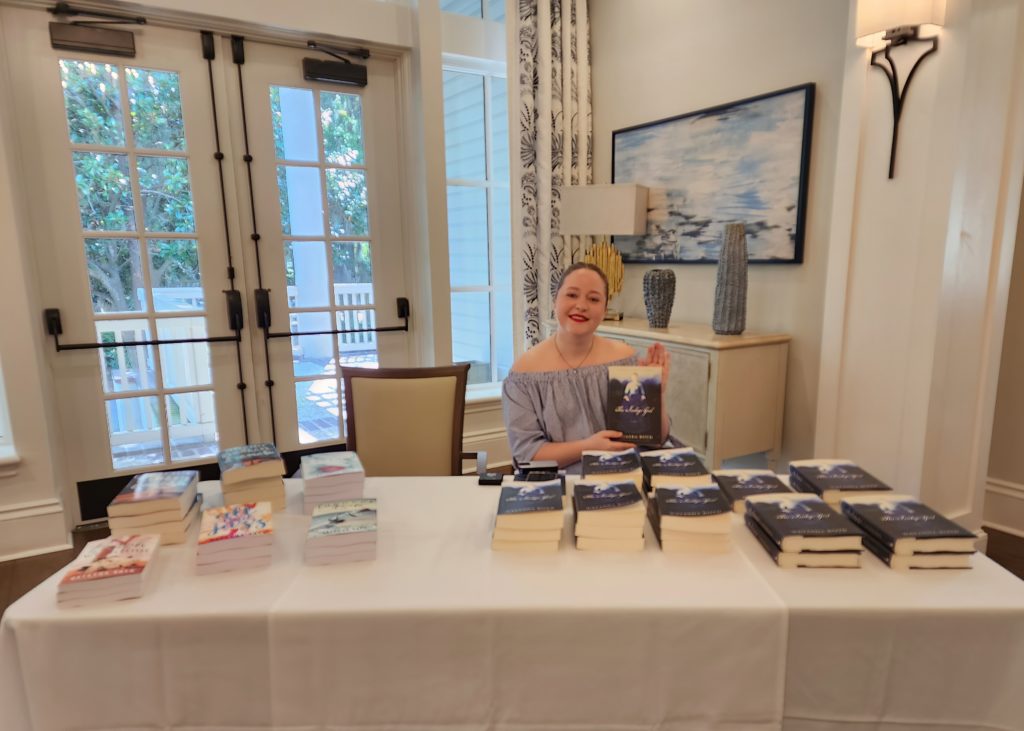
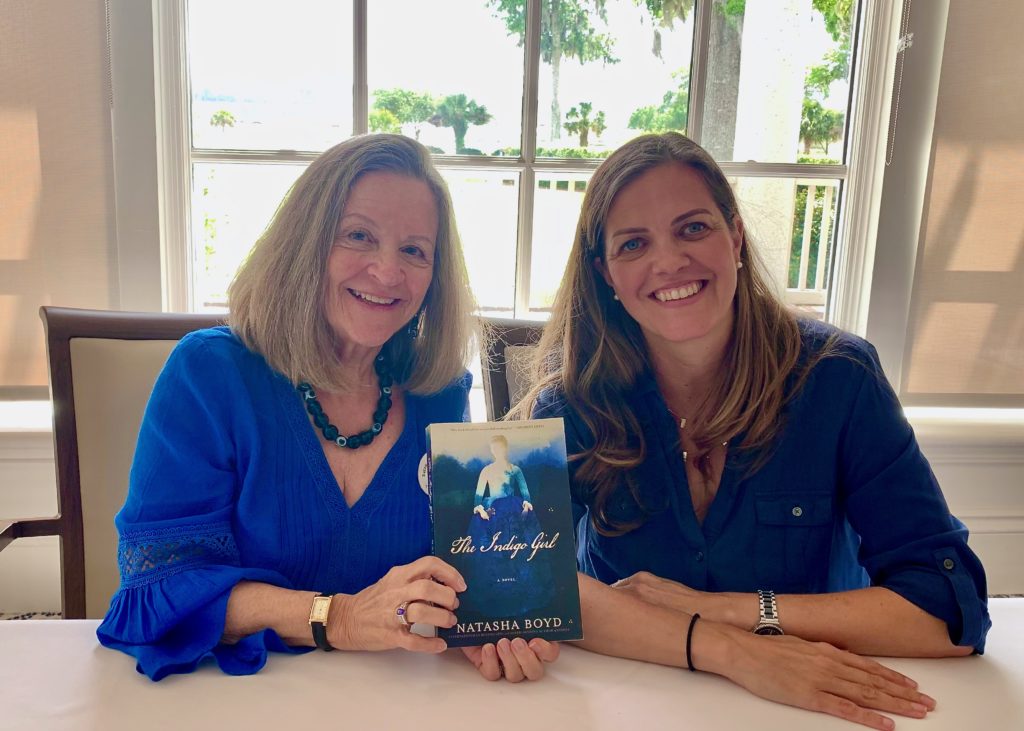
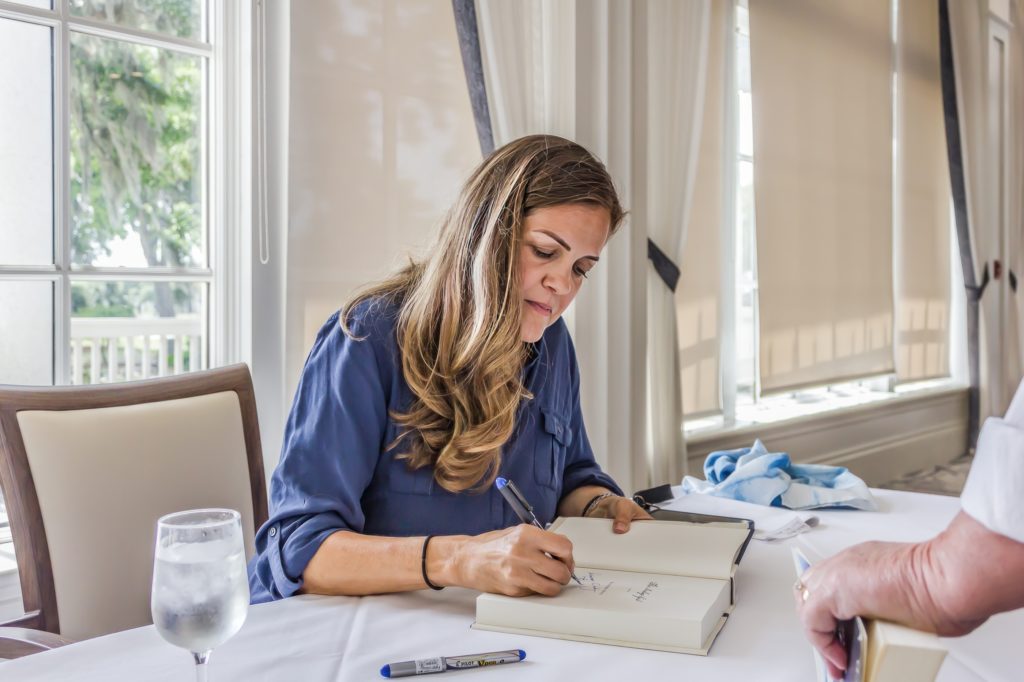
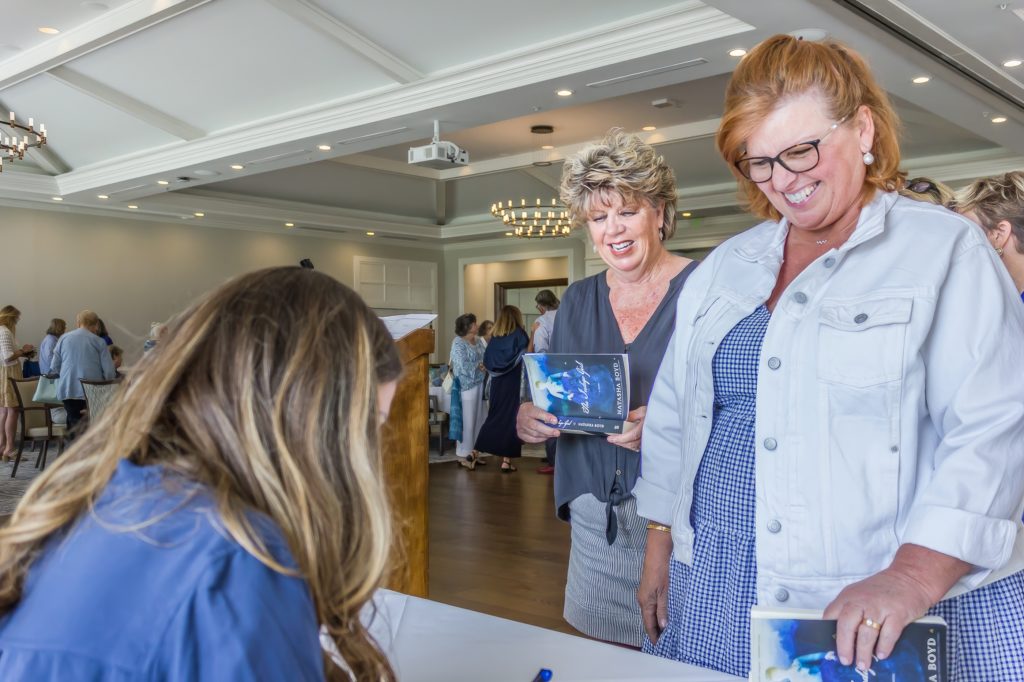
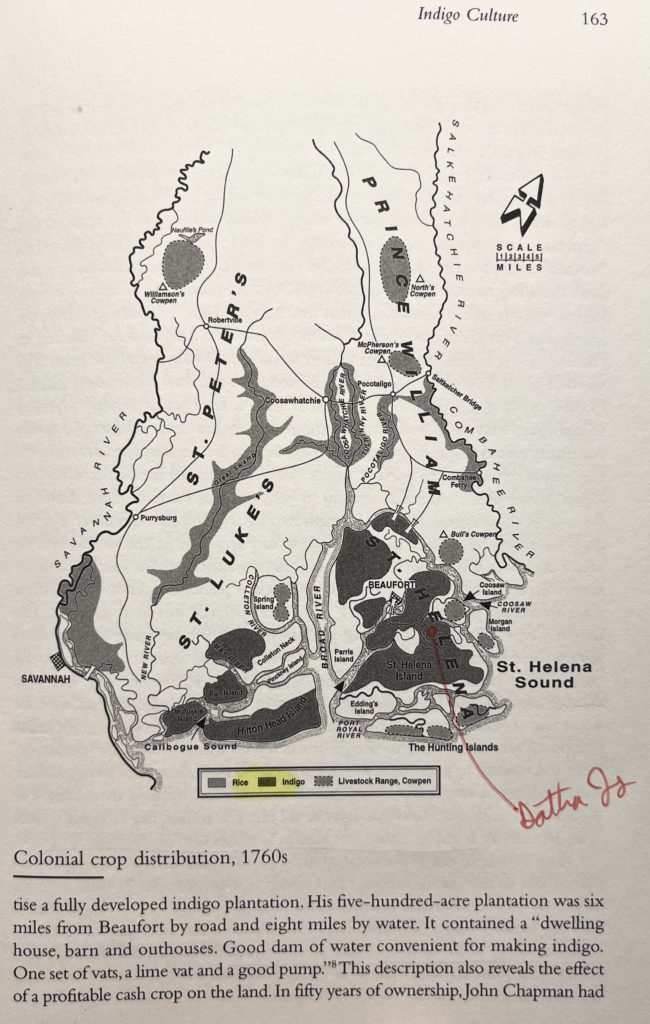
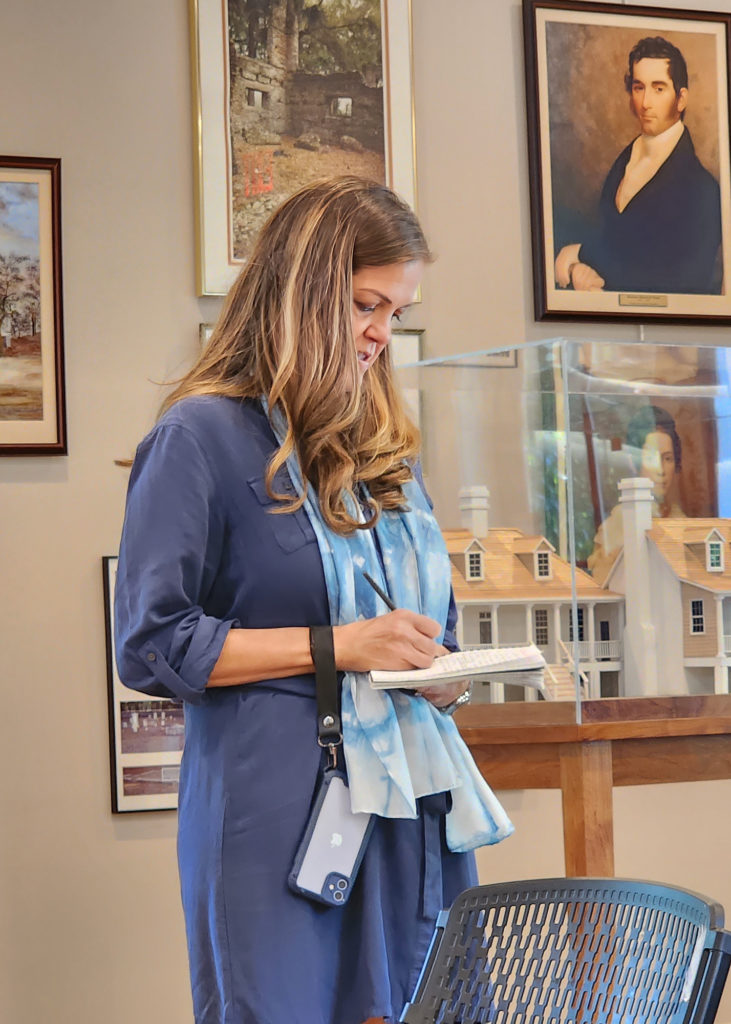
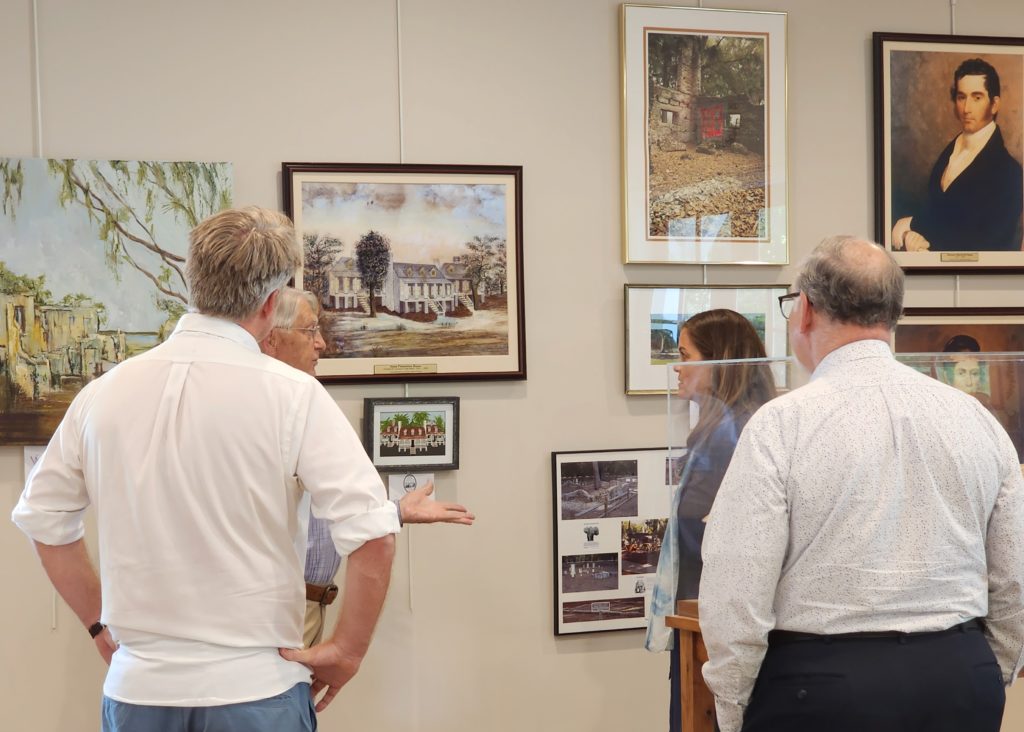
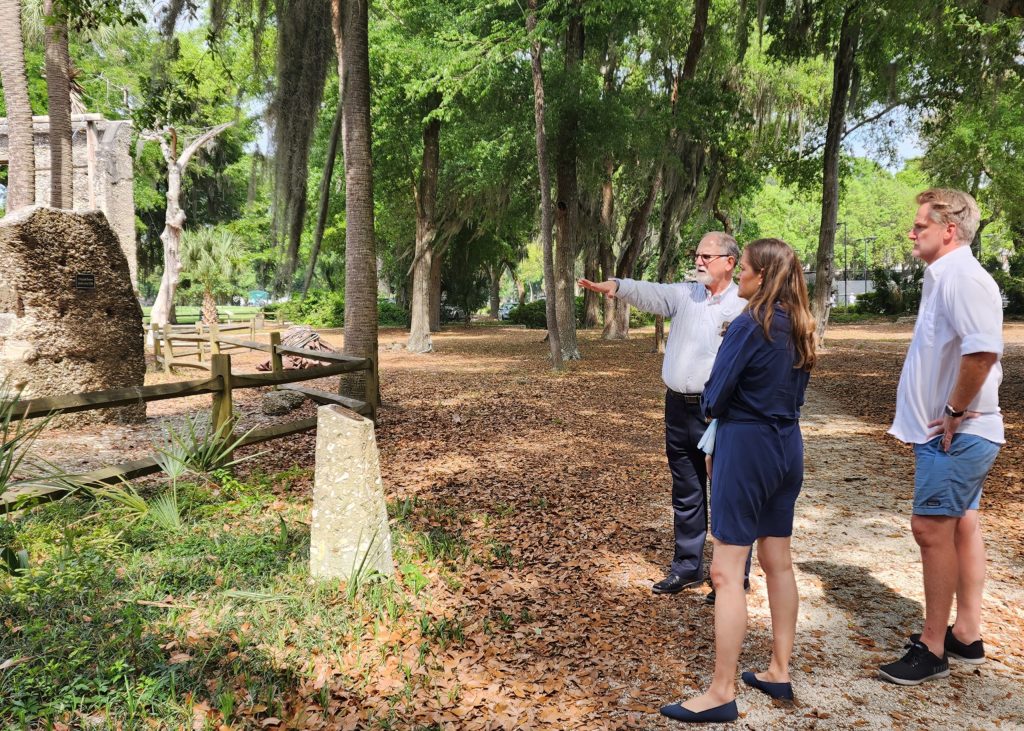
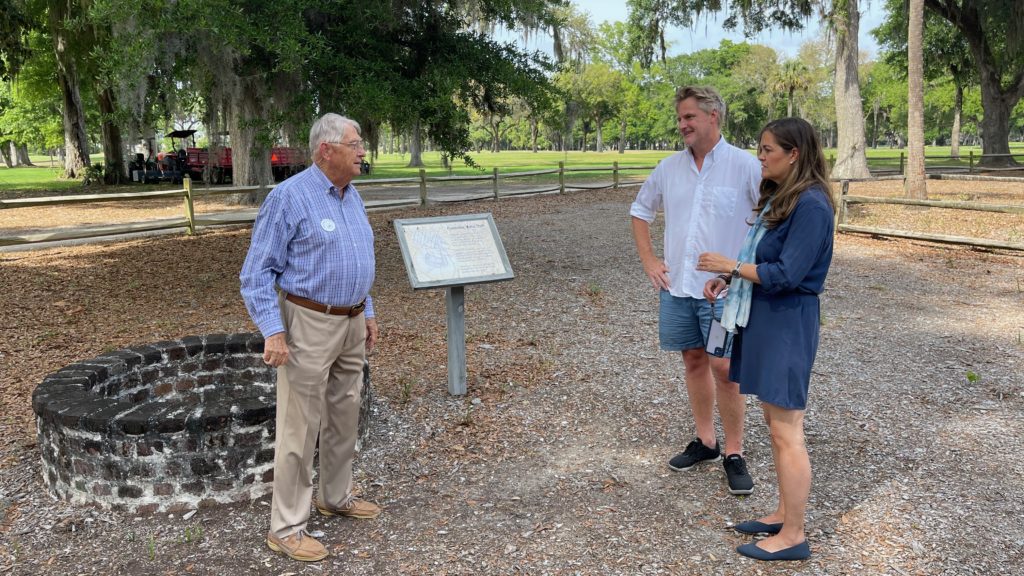
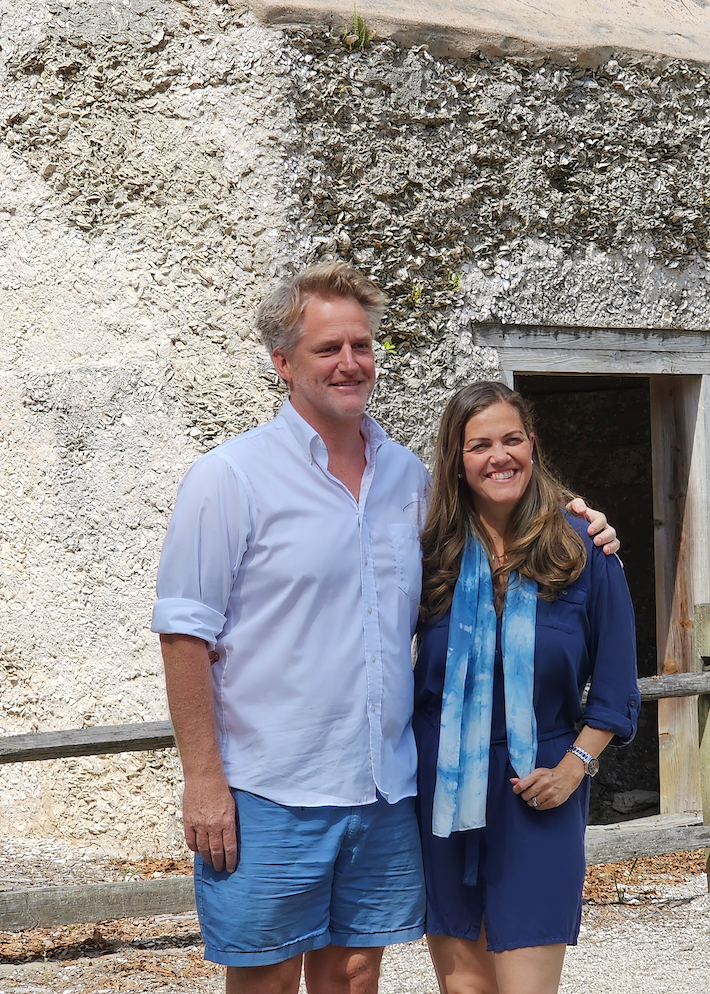
The Blue Heart of Datha Island: Indigo Farming and its Legacy
Let me tell you the story of the Blue Heart of Datha Island and the legacy of indigo farming in our sea islands.
It all started with Eliza L. Pinckney, a remarkable woman who, at the age of 22, took charge of her father’s three plantations in the 1740s. She had a passion for indigo farming and had perfected a strain of indigo that the British government was willing to pay a premium price for.
To ensure a stable supply, Eliza gave away indigo seeds to her neighbors near her Wappoo Creek Plantation, where she lived. One of those neighbors was Robert Sams (1706 – 1760), “our” William Sams father!
He grew it on Wadmalaw Island; it was probably a great source of income for him. By 1752 his brother-in-law and William Sams uncle, Col. Nathaniel Barnwell (1705-1775) was “..the most productive indigo planter in the Beaufort District.” [Professor Larry Rowland, Volume 1, Chapter 9.] Barnwell had 2,920 acres (including half of Parris Island) dedicated to indigo cultivation.
From 1747 to 1802, indigo was the primary cash crop of the colonial sea islands. Exports peaked right before the American Revolution. In 1775, over a million pounds were shipped to Britain, valued at £242,395 sterling ($29.8 Million in 2023 USD). And while the volume of indigo exported to Britain could not challenge rice, “..processed indigo was worth nearly ten times as much per weight as rice.” [Professor Larry Rowland]
By the 1760s, Indigo was grown all over the low country sea islands: Datha, St Helena, Port Royal, and Parris. In 1770 Lewis Reeve (1739-1774) inherited Datha Island from his mother, Anne Barnwell Reeve (1707-1770). It is known that he planted indigo on Datha. Whether Anne or one of her four husbands (!) had planted indigo here earlier is not known. Upon Lewis Reeve’s death in 1774, he leaves Datha to his sister Sarah (Reeve) Gibbes who eventually sells Datha Island to William Sams and his wife Elizabeth Hext.
William Sams was comfortable with indigo farming, as evidenced by his father and uncle’s involvement in the industry. It likely was his primary source of income on Datha Island from 1783, when he bought the island, until his death in 1798. Of course, with the outbreak of the American Revolution, the British market for indigo dried up, but it resurged once the war ended in 1783.
Once sea island cotton overtook indigo in the late 1790s as the primary crop of our sea islands, long-staple cotton became the source of the Sams family’s wealth for the next three generations.



